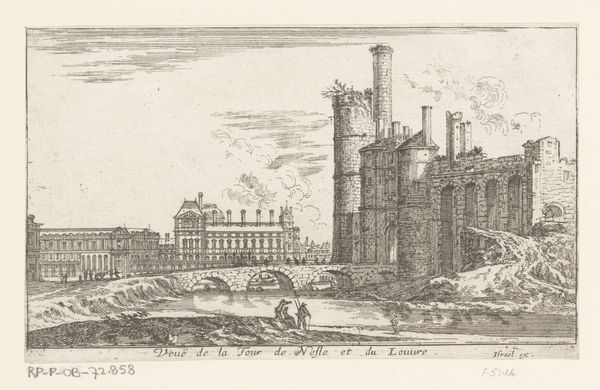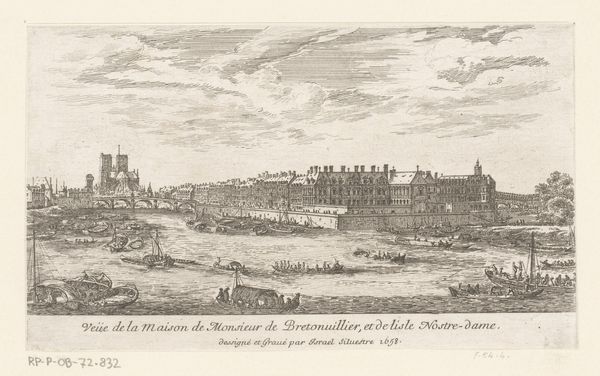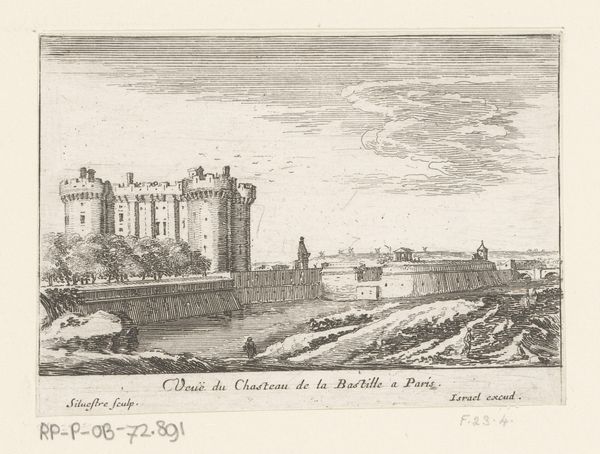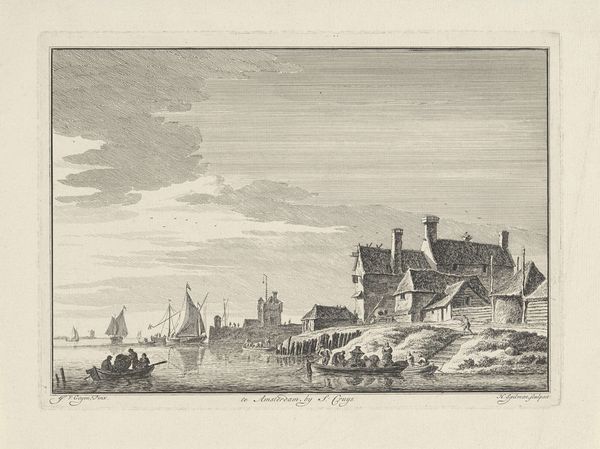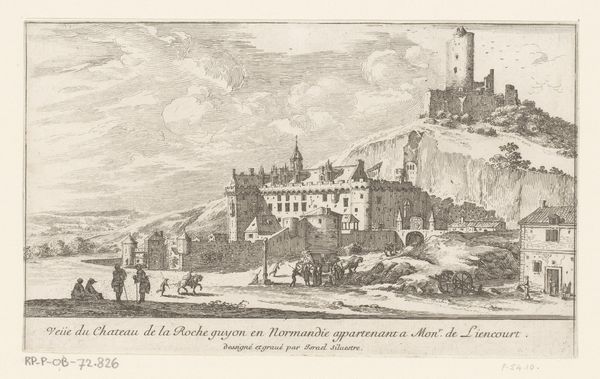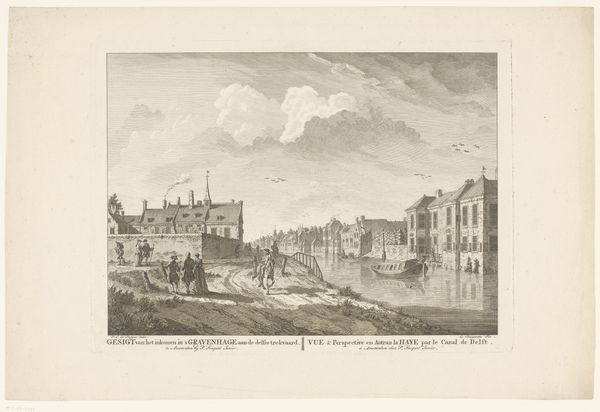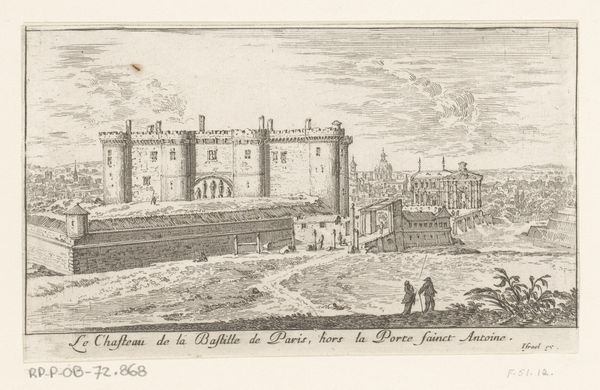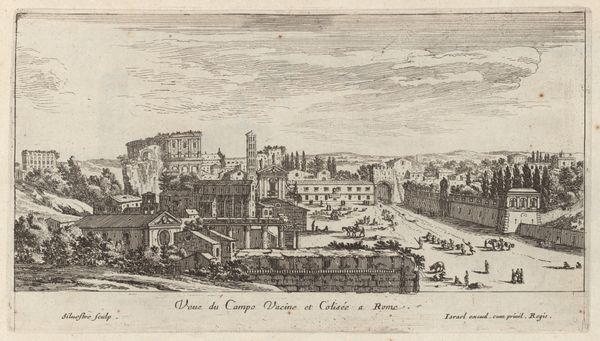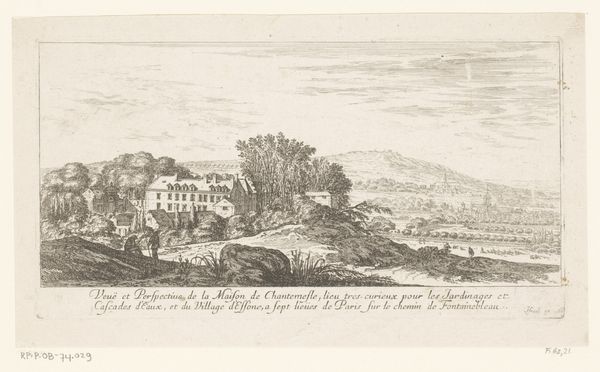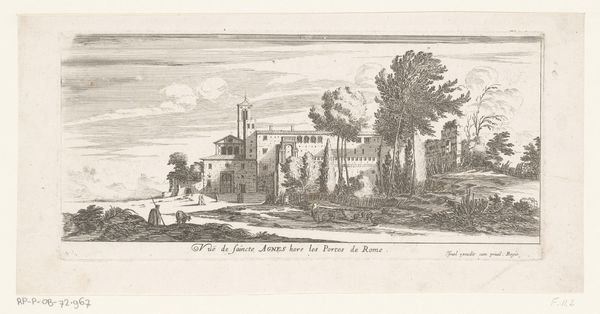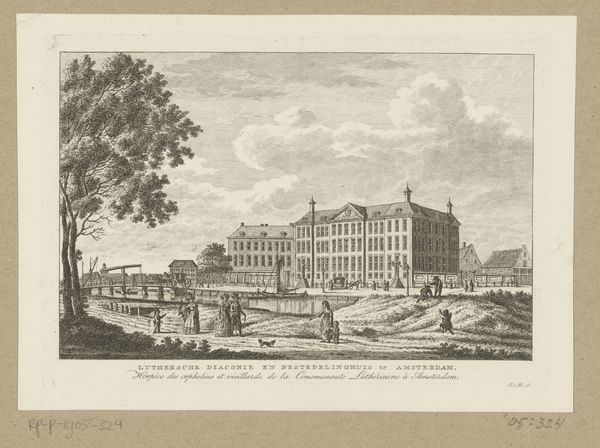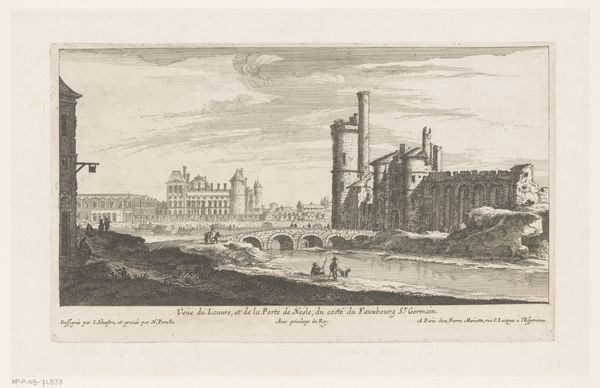
drawing, print, etching, engraving
#
pen and ink
#
drawing
#
baroque
# print
#
etching
#
old engraving style
#
landscape
#
cityscape
#
engraving
Dimensions: height 114 mm, width 199 mm
Copyright: Rijks Museum: Open Domain
Curator: This cityscape before us, titled "Gezicht op onder andere de Pont de la Tournelle", or "View of the Pont de la Tournelle Among Other Things," comes to us from the year 1658, the hand of Israel Silvestre. It is rendered in etching and engraving on paper. Editor: The immediacy of line! It almost feels like a charcoal sketch capturing a fleeting impression. You get such a stark contrast, yet, there's incredible detail embedded within the composition, specifically the depiction of the built structures. Curator: Indeed. The meticulous line work emphasizes the structural forms, particularly in the architectural rendering of the buildings, inviting contemplation on the perspectival arrangement of urban space. Note the contrast between the detailed buildings and the slightly more abstracted rendering of the river and sky. Editor: Absolutely. One can almost hear the labor intensive nature of producing prints in the 17th century; you can sense how deeply that work shaped an artist's understanding and relationship to time itself. The tooling, the ink, the sheer repetitive movement, it’s all embedded into that final product. Curator: Silvestre masterfully utilizes light and shadow, not just to depict the scene but to create depth and guide the viewer's eye. It's less a literal representation, and more of an idealized vision, a constructed image of Parisian grandeur through Baroque principles. Editor: But consider also how such prints would circulate – not just as autonomous aesthetic objects, but functioning as part of a larger system of distribution tied to the economics of labor. The lines, while delicate, reveal an underlying social web woven through printmaking culture of the era. Curator: Ultimately, this print provides insight into the way urban environments were not only viewed, but artistically constructed through deliberate and intricate manipulations of line and form during the Baroque period. Editor: Yes, seeing how deeply material processes impact our way of seeing invites one to think critically about accessibility of imagery. It’s remarkable how tangible those unseen labor and process forces feel while reflecting upon this vista of 17th-century Paris.
Comments
No comments
Be the first to comment and join the conversation on the ultimate creative platform.
